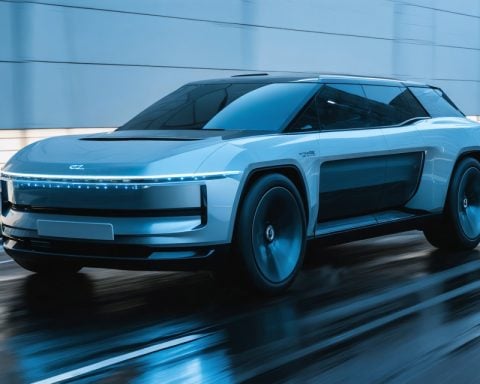- India’s automotive market is undergoing a gradual transformation, with a mix of electric, hybrid, CNG, and traditional fuel vehicles coexisting.
- The entry of companies like Tesla signals growth potential, but EV adoption will not overshadow traditional vehicles immediately.
- The market favors a variety of powertrains, indicating a slow transition rather than an overnight shift to electric vehicles.
- Infrastructure development, such as charging stations and battery supply, is crucial for supporting EV growth.
- Despite low current EV sales, the market is poised for growth with patience and investment in a hybrid-driven evolution.
- India’s automotive future relies on collaboration between established brands and new entrants, emphasizing gradual ecosystem development over rapid disruption.
The landscape of India’s automotive market stands on the cusp of a revolution—one that cannot be rushed. Beneath shimmering facades of new technologies, a complex web of engines and powertrains continues to unravel, suggesting a future where electric drives coexist with hybrids, CNG, and traditional fuels. When visionary companies, like Tesla, ponder entrance into this dynamic market, it’s not just a commercial move—it’s a nudge toward growth.
Despite the allure of electric vehicles (EVs), India’s transition remains a gradual dance. The Indian market, rich in diversity, tells a story other than overnight transformation. Even as more futuristic cars grace our streets, the market reveals a penchant for varied powertrains, implying that EVs won’t outshine their combustion counterparts tomorrow.
When titans like Tesla consider entering India, optimism peaks and naysayers predict the downfall of established giants. However, Gurmeet Chadha of Complete Circle Consultants reminds us that such predictions can be misleading. Each aspirant brings the promise of innovation—an inevitable boon for the local EV ecosystem and beyond.
India’s automotive future hinges on a slowly crafting ecosystem. Charging stations and battery cells are crucial pieces, not mere afterthoughts. Evidence lies in last year’s sales—amid 40 lakh cars, only a meager fraction were electric. Leaping from 2.5% to even a modest 10% market share will take perseverance and patience.
Figures like Mahindra and Tata may falter in the spotlight’s heat, but keen investors should pierce the surface drama. Here lies an opportunity woven in evolution, not disruption. As such, India’s journey to an electric reality will be powered by a coalition of old and new. A hybrid heart beats strongest when nurtured with patience.
Is India Ready for an Electric Vehicle Boom?
Overview of India’s Emerging Automotive Market
India’s automotive landscape is a testament to slow yet steady evolution, presenting a blend of traditional combustion engines, hybrids, CNG vehicles, and a budding electric vehicle (EV) segment. While the market opens up to innovative technologies, the transition to EVs in India remains gradual, influenced by infrastructural and economic complexities.
How-To Steps & Life Hacks for Adopting EVs in India
1. Research & Select the Right Vehicle: Analyze driving patterns, budget, and infrastructure availability. Mahindra and Tata offer well-regarded entry-level electric vehicles in India.
2. Home Charging Setup: Consider installing a Level 2 home charger for faster charging efficiency. Popular options include portable chargers from Exicom.
3. Utilize Incentives: Leverage state and federal incentives such as reduced GST and subsidies on electric cars to mitigate the higher upfront costs.
4. Explore Financing Options: Several banks offer specialized Green Car loans with favorable terms for EV purchases.
Real-World Use Cases
– Ride Sharing & Public Transport: Companies like Ola have initiated EV fleets to reduce operating costs and carbon emissions.
– Inter-City Travel: Longer-range EVs can bolster tourism by offering eco-friendly transport alternatives between cities.
Market Forecasts & Industry Trends
The EV market in India is projected to reach over USD 47 billion by 2026, driven by supportive government policies and investments in battery technology. According to a report by NITI Aayog, EVs could make up 30% of all vehicle sales by 2030.
Reviews & Comparisons
Popular models such as the Tata Nexon EV, MG ZS EV, and Hyundai Kona Electric have received favorable reviews for their performance, range, and affordability compared to global EVs. However, their range and charging infrastructure point to areas for improvement.
Controversies & Limitations
– Range Anxiety: Many potential buyers remain apprehensive due to limited charging infrastructure.
– Battery Life & Recycling: Sustainability issues related to battery disposal and recycling persist.
– Cost Parity: Initial costs remain higher compared to traditional cars, despite lower long-term operational costs.
Security & Sustainability
Security measures such as connected car features can sometimes pose data privacy concerns. Sustainable practices, including robust recycling programs for EV batteries, are pivotal to minimizing environmental impact.
Pros & Cons Overview
Pros:
– Lower operational and maintenance costs
– Reduced emissions and environmental impact
– Government incentives and reduced GST
– Improved urban air quality
Cons:
– Higher initial purchase cost
– Limited charging infrastructure
– Range limitations
– Battery recycling challenges
Actionable Recommendations
1. Embrace Hybrids: For those hesitant about full EVs, consider transitioning with hybrid vehicles as a balanced approach.
2. Invest in Charging Infrastructure: Encourage local businesses and residential complexes to establish charging stations.
3. Stay Informed: Follow government policy updates and emerging market trends for future vehicle investments.
For further insights, visit Tata Motors and NITI Aayog.



















